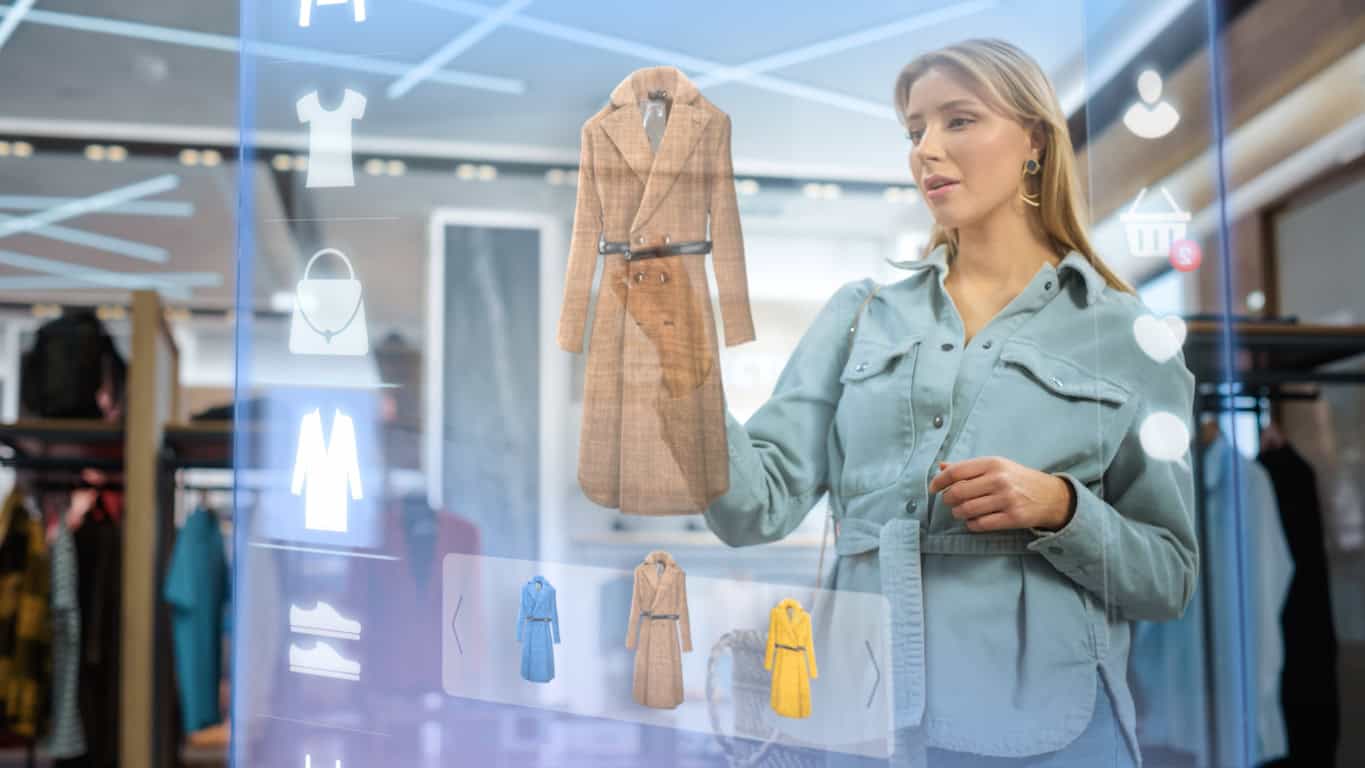
iStock.com/gorodenkoff
Is It Time for Phygital Retail To Become Mainstream?
In 2022, BrainTrust members discussed the notion of a phygital retail future. Now, over two years later, we take a look at how far this landscape has evolved in regards to digitizing the physical store.
The integration of digital and physical experiences, known as “phygital,” is becoming increasingly prevalent in the retail and restaurant sectors. Mobile payments, loyalty apps, and mobile ordering are reshaping customer interactions, and they allow for the highest levels of personalized shopping experiences.
With 53% of Americans now preferring digital wallets for mobile payments and branded apps playing a central role in loyalty programs by enabling mobile couponing and ordering, consumer preferences are shifting toward digital platforms. When retailers aren’t providing their own digital setup within a store, customers must rely on their smart devices, which require either Wi-Fi connectivity or cellular data, both of which pose challenges. Ensuring seamless customer experiences hinges on adequate connectivity in the retail landscape.
Challenges With Wi-Fi
Wi-Fi connectivity presents challenges, including cumbersome login procedures and security vulnerabilities. Public Wi-Fi networks are often unencrypted, posing risks to sensitive data such as passwords and credit card information.
“With Wi-Fi, users have to search for the right network and enter personal information or accept long-winded terms and conditions before being granted access,” said Stephen Kowal, chief commercial officer at Nextivity. “They then need to repeat this process for each store or restaurant they enter. This is not a good customer experience, particularly in large retail and restaurant venues such as malls and food courts.”
An alternative approach to keeping shoppers connected is to use cellular signal boosters. These devices leverage outdoor cellular networks to deliver strong and dependable connectivity indoors. By addressing connectivity gaps with cellular signal boosters, businesses can pave the way for successful digital transformation, driving higher sales and fostering loyal customer relationships in the evolving landscape of phygital experiences.
However, it’s important to choose the right signal booster. Newer Active DAS Hybrid solutions offer reliable coverage, cost-effectiveness, and quicker setup compared to legacy distributed antenna systems (DAS), according to Kowal.
Phygital Trends
At the Retail Technology Show 2024, several tech trends were highlighted. RFID technology, while not new, continues to improve in affordability and efficiency. Companies like Mercaux showcased RFID applications in self-checkout and digital fitting rooms, focusing on genuine customer behavior rather than “more gimmicky or expensive alternatives like AR try-on mirrors.”
The potential for collecting data in physical retail environments is significant, yet implementation remains challenging. Companies like Refive and NewStore are making strides to bridge this gap by introducing innovative solutions.
Refive uses QR codes to establish digital touchpoints within stores. These codes allow customers to access information on promotions or receive digital receipts without needing to download an app or provide an email address at checkout. This technology not only tracks customer behavior in stores but also helps build customer profiles for personalized interactions.
NewStore enhances the in-store experience by enabling retailers to manage their operations through an iPhone. This includes functionalities like store fulfillment, clienteling, endless aisle, and mobile checkout services. The technology effectively transforms store associates into “living websites,” offering customers an optimized experience similar to what they enjoy online.
Scandit, a tech company that offers smart data capture software, demonstrated how digital devices can streamline store operations. Its technology enables quick barcode scanning for inventory management and order picking and uses AR to locate products or provide reviews and additional information. These innovations show promise in enhancing efficiency and customer experience in physical retail settings.
Examples of Phygital Implementation in the Past Few Years
Happy Moon’s Cafe, a Middle Eastern restaurant chain, leads the charge with its groundbreaking 3D menus, allowing customers to visualize menu items with augmented reality before ordering. Meanwhile, Zara’s innovative Store Mode feature on its app empowers shoppers with real-time inventory tracking and convenient in-store navigation, streamlining the shopping experience.
Ralph Lauren addresses authenticity concerns by embedding QR codes in clothing items, providing customers with instant verification and styling tips. The Hover app utilizes machine learning to transform simple photos into detailed 3D models, helping customers visualize remodeling and DIY projects with precision.
Nordstrom continues to support live video shopping, offering immersive experiences where customers can interact with products and make purchases directly from themed livestreams. Finally, Rose City Goods integrates QR code shopping into its interactive window displays, allowing passersby to seamlessly shop for items showcased in the storefront without setting foot inside the store.
As retailers continue to blur the lines between digital and physical realms, these innovative approaches pave the way for enhanced customer engagement and convenience in the ever-evolving world of retail.
Discussion Questions
How has the concept of a phygital retail future evolved since 2022, and what are the significant advancements or challenges faced in digitizing the physical store?
In what ways do mobile payments, loyalty apps, and mobile ordering reshape customer interactions in the retail and restaurant sectors, and how crucial is robust connectivity in facilitating these digital experiences?
How do solutions like Refive and NewStore integrate data collection in physical retail settings with digital strategies, and what impact do they have on enhancing customer experiences and operational efficiency for retailers?
